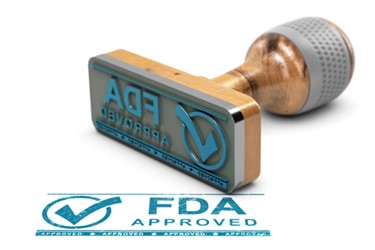FDA Leads, C-Suite Lags Continuous Manufacturing Acceptance

By Louis Garguilo, Chief Editor, Outsourced Pharma

What’s happened to the continuous manufacturing (CM) revolution that was barreling down the biopharma turnpike? We were going to catch up to other industries and enter our own age of advanced manufacturing.
One measurement of progress is the five FDA-approved drugs utilizing CM:
Orkambi and Symdeko (Vertex); Prezista (J&J); Verzenio (Eli Lilly); Daurismo (Pfizer)
But there’s a recordable sentiment within the industry we would have more if pharma executives would finally wrap their arms around the value of moving to advanced manufacturing.
In other words, CM gets stuck in the C-Suite.
On the other hand, I’ve heard more positive dispositions on how the FDA is doing all it can to break down those adoption doors.
Continuous Support From FDA
The agency couldn’t be clearer.
In February, for example, it issued its “Quality Considerations for Continuous Manufacturing Guidance for Industry.” From the intro:
“FDA supports the development and implementation of continuous manufacturing for drug substances and all finished dosage forms where appropriate, including those submitted in NDAs, ANDAs, drug master files (DMFs), biologics license applications (BLAs), and nonapplication over-the-counter (OTC) products.”
And this:

Great expectations. Unfortunately, still rarely adopted.
Perhaps that’s part of the reason just a few weeks ago the FDA sent out an email promoting this publication: Impact Story: Regulatory Science is Strengthening U.S. Drug Product Manufacturing. Again; no mistaking where the agency stands:
“Continuous manufacturing provides a quicker, more reliable way to make pharmaceuticals. FDA is helping bring this method into widespread use.
“The stunning technological advances in recent decades have transformed our lives in ways many of us would not have imagined. In contrast, many pharmaceutical manufacturing processes have remained largely unchanged.
To address this issue, CDER is supporting the pharmaceutical industry's transition to continuous manufacturing - a more technically advanced and automated manufacturing method. Continuous manufacturing has the potential to make U.S. manufacturing faster and more reliable. In doing so, it can help reduce drug shortages and recalls related to problems with product or facility quality.”
So now we’ve added a dose of goading, and an increase of urgency. The agency wants change. Frankly, so do many others.
Within this “impact story” is mention of research done at MIT on CM. Outsourced Pharma readers may recall we spoke to (at that time) Novartis-MIT Center for Continuous Manufacturing, director and MIT professor, Bernhardt Trout. He also led us to Basel, Switzerland, and Markus Krumme, head of continuous manufacturing for Novartis, resulting in these editorials:
Novartis And The Arrival Of The Continuous Manufacturing Facility
Continuous Much More Than Manufacturing
I followed up with Trout a few days ago. To say he was eager to discuss where we are with CM uptake is perfectly correct. And while the objectives of the Novartis-MIT Center have now been met, Trout remains “much in the heart of continuous manufacturing,” including more projects with pharma companies.
The Show Goes On … Slowly
The Novartis-MIT Center accomplished its goals, which were always intended to benefit the entire pharma industry – including the FDA.
One goal was to demonstrate an “end-to-end, continuous unit at bench scale, with automated- model-based control.” That was accomplished 2011. Next was to develop “a whole host of other continuous technologies, including from new chemistries, reactor designs, to crystallization, drug product formation, and new control strategies.”
“I should add,” says Trout, “we accomplished our overall role in helping to put continuous on the mind of those in the pharma industry, including regulatory authorities, in particular with EMA and PMDA (Japan’s Pharmaceutical and Medical Devices Agency). (In part two of review, readers will learn why this last statement is of particular concern to pharma executives looking to move to CM.)
When I ask if, as we sit here nearing halfway through 2019, he’s satisfied with progress regarding the adaption of continuous manufacturing at biopharma or CDMOs, the usually upbeat Trout replies directly: “Not at all. It’s way too slow.”
“I’ve observed the industry for quite a while,” he explains. “Everyone agrees there are tremendous advantages to continuous manufacturing. So that if we could just all snap our fingers and the whole industry was continuous, there'd be major benefits across the board in terms of quality, reduction of potential stock outs, of robustness, of supply chain and footprint, cost flexibility, all these things.
“The challenge is overcoming barriers that I believe are primarily mental. A change in mindset is required.
“The C-Suite at biopharma companies doesn’t have manufacturing on the foremost of their mind, in contrast to other industries. Pretty much every other industry is already doing continuous or advanced manufacturing in some form.
“We’ve found the pharma companies that have made advances are those where there has been some higher level – board level or important stakeholder – who sponsors the change to continuous manufacturing. They are then supported by a level below the C-Suite: implementers knowledgeable and eager to move to CM. If you don’t have both of those levels, it doesn’t happen.
“The barrier is the C-Suite. That’s why we've seen incremental progress.”
The Bright Side
Trout catches himself, and quickly returns to his more usual positive self.
“But it’s still progress we are seeing. Five marketeted/approved drugs right now using continuous processes in the past six years or so. We wish it would be a lot more rapid implementation than that, but that’s pretty good.”
We’ll leave off this part one on that note. In part two, we’ll also hear from some of those biopharma leaders who are engaging continuous manufacturing.
